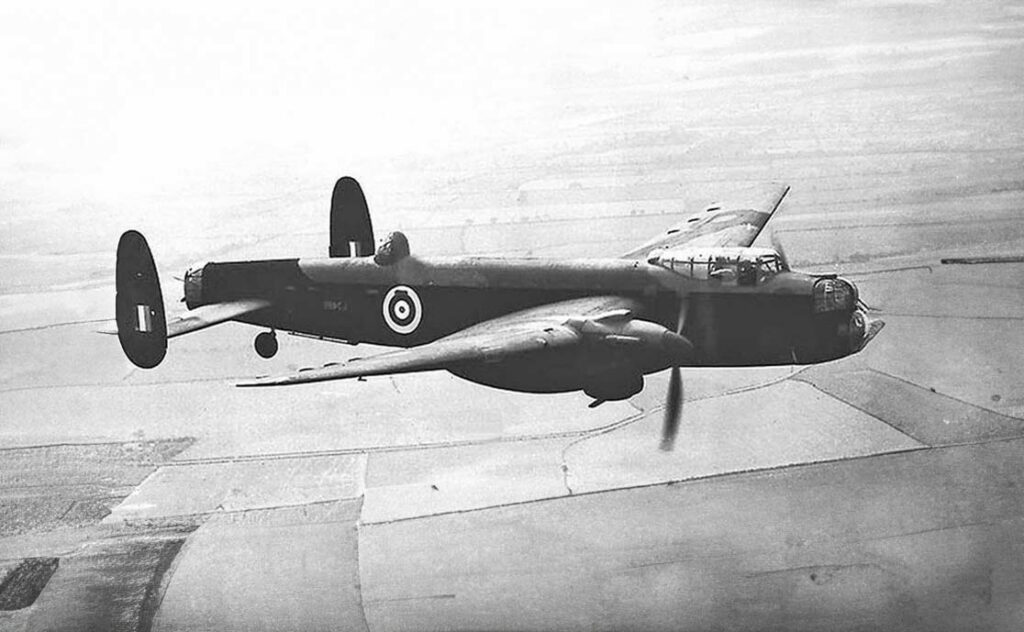The Avro Manchester, a WWII British twin-engine bomber, was known for its Rolls-Royce Vulture engines and significant role in early RAF bomber operations.
This article provides an in-depth examination of the Avro Manchester, a significant British bomber of World War II. It covers the aircraft’s development history, design, performance, and military use, offering insights into its operational strengths, challenges, and legacy in the context of wartime aviation.
The Avro Manchester was a pivotal British aircraft during the early years of World War II. Developed by Avro, a leading British aircraft manufacturer, it served as a heavy bomber in the Royal Air Force (RAF). This article aims to provide a comprehensive overview of the Manchester, its development, design, operational performance, and role in military conflicts.
History of the Development of the Avro Manchester
The development of the Avro Manchester was a response to the RAF’s need for a new generation of heavy bombers in the late 1930s. At that time, the RAF sought to expand and modernize its bomber fleet, anticipating the increasing likelihood of large-scale conflict in Europe. The Manchester project was initiated by Avro under the direction of Roy Chadwick, a prominent British aircraft designer.
The program officially started in 1936, with the Air Ministry issuing Specification P.13/36, which called for a twin-engine bomber capable of carrying a substantial bomb load over long distances. Avro’s proposal led to the Manchester’s development, with the first prototype taking flight on July 25, 1939.
The aircraft’s development was closely tied to the escalating tensions in Europe and the emerging need for strategic bombing capabilities in the looming war.
Design of the Avro Manchester
The Avro Manchester was a significant design undertaking, featuring several innovative aspects for its time. It was a twin-engine, all-metal monoplane with a retractable undercarriage. The aircraft’s most distinctive feature was its Rolls-Royce Vulture engines, each producing around 1,760 horsepower (1,313 kW). These powerful engines were a key factor in the Manchester’s design, although they later proved to be problematic.
The Manchester had a wingspan of 90 feet 1 inch (27.46 meters) and a length of 69 feet 4 inches (21.13 meters). Its maximum takeoff weight was approximately 50,000 pounds (22,680 kilograms). The design included a distinctive twin-tail configuration, which provided improved stability and control.
Despite its advanced design, the Manchester faced significant challenges, primarily due to the unreliable performance of the Vulture engines. This issue led to operational limitations and affected the aircraft’s overall effectiveness.

Performance of the Avro Manchester
The performance of the Avro Manchester was a mix of promise and challenges. Its Rolls-Royce Vulture engines were intended to provide considerable power, enabling a maximum speed of around 265 miles per hour (426 kilometers per hour) and a service ceiling of 19,200 feet (5,852 meters). The aircraft had a range of 1,200 miles (1,931 kilometers), allowing it to conduct long-range bombing missions.
Compared to contemporaries like the Handley Page Halifax and the Short Stirling, the Manchester’s performance was hindered by its engine reliability issues. While it had the potential for impressive performance, the operational reality often fell short due to mechanical problems.
Military Use and Combat of the Avro Manchester
The Manchester was armed with eight .303 inch (7.7 mm) Browning machine guns for defense and could carry up to 10,350 pounds (4,699 kilograms) of bombs. It saw limited combat use with the RAF, primarily in bombing missions over Germany and occupied Europe in the early years of the war.
The aircraft’s operational history was marred by its engine unreliability, leading to a high attrition rate. This issue, combined with the development of more reliable and capable bombers like the Avro Lancaster, led to the Manchester’s early retirement from active service.
The Manchester was not exported to other countries, and its service life was relatively short. It was officially replaced by the Avro Lancaster, a more successful design that addressed many of the Manchester’s shortcomings and went on to become one of the most famous British bombers of the war.
The Avro Manchester, despite its operational challenges, played a crucial role in the evolution of British bomber aircraft during World War II. Its development and deployment highlighted the technological ambitions and challenges of the era. Although it was quickly overshadowed by more successful designs, the Manchester’s contribution to the development of strategic bombing capabilities and its influence on subsequent bomber designs like the Lancaster cement its place in aviation history.
Back to the Bombers section.